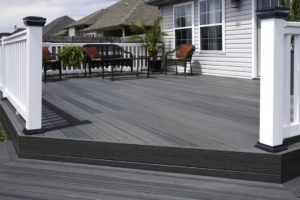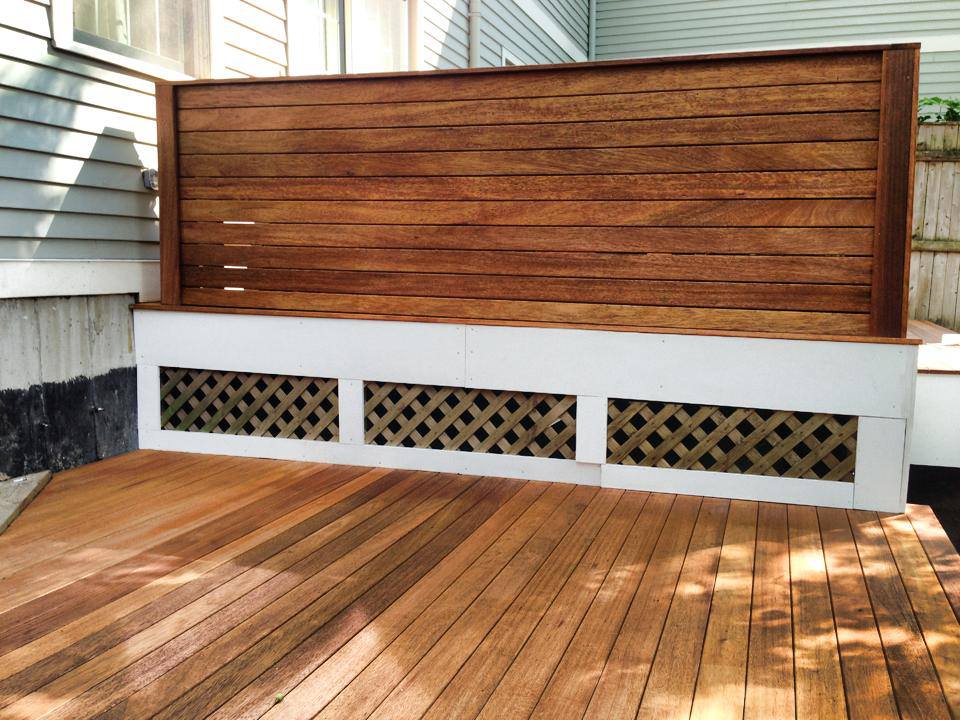[vc_row][vc_column][vc_separator][vc_column_text]As the summer approaches, our team will begin working on numerous deck projects. The process of designing & building a deck involves many decisions including design, location, size, and what materials will be used. During this process, we get a lot of questions about what materials to use and if composite or wood is the best option. To determine which type of deck will work best for your lifestyle and budget we’re breaking down the two main components of each: cost and upkeep.
Composite Deck:

- What’s in it: Composite boards consist of some type of plastic material, such as polyethylene and/or polyvinyl chloride, and wood particles.
- Two options: Hollow and solid.
- Hollow boards are cheaper than solid boards however, they’re not as sturdy and can also hold water internally, resulting in warping and decomposition.
- Solid boards expand and contract more than hollow boards, but the big plus is, they’re stronger and tend to look more like real wood.
- Pricing: In most cases, a composite deck will cost more than a wood deck but over time the price of a composite deck would be less than due to minimal upkeep.
- Overview: Composite is more expensive than wood but provides little upkeep.
Wood Deck:

- What’s in it: Most decks are made out of treated lumber with wood types ranging from pine to mahogany.
- Pricing: Pricing can range drastically depending on the type of wood you decide to go with.
- Southern Pine, one of the most popular options, is sturdy but is also known to warp easily, requiring more maintenance.
- Cedar, a beautiful wood with an amazing smell, is more resistant to rot but breaks down when exposed to moist conditions.
- Mahogany, a higher grade wood, is very hard, extremely durable and attractive in appearance with few flaws. Ages extremely well with little to no maintenance. Check out the recent mahogany deck we just built to see how gorgeous this wood truly is.
- Overview: If you love the look of natural wood then we suggest using a high quality wood, such as mahogany, this will ensure for a high-quality deck with less upkeep. Lower quality woods will require maintenance on a yearly basis.
We hope you found these comparisons helpful. At the end of the day it’s really up to the homeowner to decide which option is best, as both have pros and cons. We suggest to think about your long-term plan and how much up-keep you want in the future.[/vc_column_text][vc_separator][vc_column_text]Thanks – The McDonald Contracting Team
Check us out on Instagram for more tips and a behind the scenes look![/vc_column_text][/vc_column][/vc_row][vc_row][vc_column width=”1/2″][vc_facebook][/vc_column][vc_column width=”1/2″][vc_pinterest][/vc_column][/vc_row]

